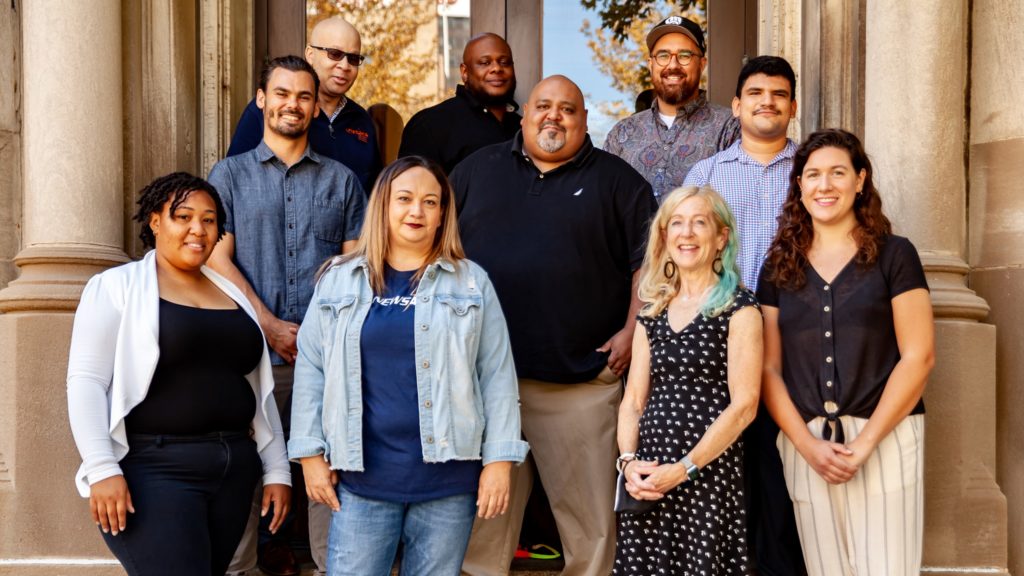
This Q&A is part of a new INN series on how nonprofit news outlets serve communities of color. You can find more Q&As here.
Who: Ron Smith, editor and project director
News outlet: Milwaukee Neighborhood News Service
Size of outlet as of January 2022: One permanent full-time employee
Outlet launch year: 2010
The Milwaukee Neighborhood News Service provides professional reporting to communities of color in Milwaukee that are primarily Black and Latinx. Our mission is to intentionally shine a spotlight on the ordinary people who do extraordinary things in our neighborhoods but whose accomplishments are seldom picked up by other media, which tend to focus on doom and gloom as well as drama and trauma. We are not a “good news” site, however. Our goal is to paint a complete portrait of life for central city residents.
I am a lifelong journalist who started working while in high school for a nonprofit media outlet that produced a monthly paper written by and for Chicago teens. Since then, I have worked at places large and small, including Newsday, The Oregonian, the Los Angeles Times and the Milwaukee Journal Sentinel. I left my job as managing editor for news at USA TODAY to come to NNS in 2019. My job entails a lot more than I bargained for, including training students, working with our paid staff of six part-time reporters and editors, and supporting two Report for America corps members.

Although we expressly tailor our coverage to Black and brown communities in Milwaukee, we have also attracted readers who live outside those neighborhoods who want to know more about life in the central city. We can see this by looking at the distribution list for our daily newsletter. In the beginning of the pandemic, we had 3,000 subscribers. Now, that list is 7,425. On Facebook, we have 17,937 followers. We can tell through our interactions that our audience is more diverse than we’d expected but more analysis is needed.
At NNS, we put a lot of thought into our newsgathering menu. There’s no sense in doing all this work if our audience is not being served. Milwaukee is one of many cities in the midst of an eviction crisis. While we continue to do stories that hold our elected officials and community leaders accountable, we know that this is not the most pressing concern for someone who is going through the eviction process. They are worried about staying in their home. We intentionally include resources where readers can get help to fill information gaps.
The biggest challenge we run into is the lack of time and expertise to do thoughtful analysis. We know this needs to become a priority and will be working to get an audience growth strategist to help transform what we know anecdotally (or what we think we know) into something more quantitative. In many ways, we are still guessing about our readership, and we actually need to conduct a readership survey to help us assess who they are and also to help us gauge how to grow the audience.
“Ultimately the news business is about relationships. You can’t meet anyone where they are if they don’t trust you. And trust takes time to build.”
Ron smith
I think we always make mistakes, but many have to do with our capacity. Until this year, we’ve not been able to reach our Spanish-speaking audiences, but through our partnership with the Wisconsin Center for Investigative Journalism, we’ve been able to hire a person to translate some of our stories. I always say we are a “community powered” newsroom but I don’t think our newsroom as a whole spends enough time in the communities and we need to be more intentional about that. In 2022, for example, we are devoting the fourth Thursday of the month to go out in the community and talk to neighborhood groups and agencies about what they are doing and the stories they think we should be covering. I feel this will help our efforts to cover the community and show residents that we don’t want to be transactional. Rather, we hope we can be transformational. You can’t listen to the community if you are not in the community or providing a safe place for leaders to interact with your newsroom.
Take the plunge. And be willing to make mistakes, own your mistakes and share that with the community. Ultimately the news business is about relationships. You can’t meet anyone where they are if they don’t trust you. And trust takes time to build. Don’t expect miracles overnight. Crawl. Then walk. And then run. No one has all the answers. But I am willing to bet that our readers are a lot smarter than we give them credit for. Be willing to let them in and explain your process. Create a culture in which you seek feedback — and a culture in which you do more than just listen. Creature a culture in which you ACT.
With the addition of the first managing editor in our history, I am excited to elevate our coverage while also helping our reporters continue to grow and soar in their storytelling. I want us to really focus on our watchdog efforts, with solutions-oriented stories that examine the city’s lead-poisoning crisis; our eviction crisis; and the toil violence, incarceration and COVID-19 take in our communities. At the same time, we will continue to be intentional about reporting on the ordinary people who do extraordinary things. Folks need more than doom and gloom, they need to see the humanity that exists in our world and especially in their neighborhoods.
Read more from the series here.
Back to top